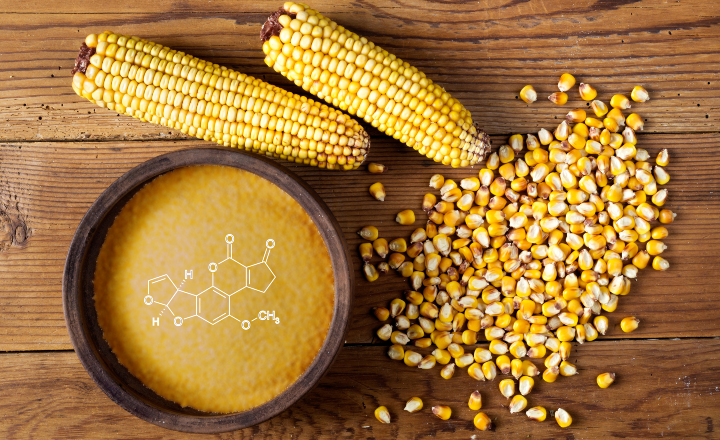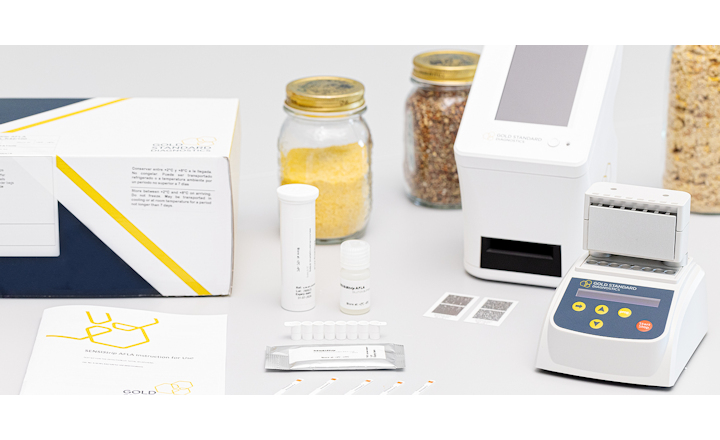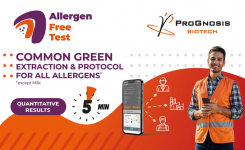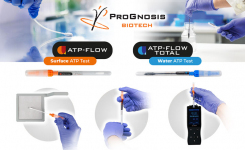 Contributed Content by Platon Chitzos, Exports Manager of ProGnosis Biotech
Contributed Content by Platon Chitzos, Exports Manager of ProGnosis Biotech
S.A.Mycotoxins in food and feed have been in the spotlight over the past 5 years, after consecutive Aflatoxin crises through-out the Mediterranean basin and in South and Eastern Asia. By nature, mycotoxins are difficult to detect due to problems of getting a sample that is representative of the whole batch.
Whilst sampling milk for Aflatoxin M1, or wine for Ochratoxin A is fairly easy, since both are fluids and easy to homogenize. In cereals, nuts and dried fruit, things get more difficult. Bulk transfer of 25 or 30 MT of corn, for example, can contain just a few infected kernels. These few kernels, if ingested by a ruminant, may result in Aflatoxin milk contamination above any acceptable level worldwide. This is unfortunately an example of a common but uncontrollable event; therefore, sampling and sub-sampling will determine whether testing with ELISA, lateral-flow tests or HPLC, deliver useful results.
Here, we will look at the final stage of sub-sampling and testing, with different methods, and comment on the statistics behind them. Ideally, the larger the sample analyzed, the greater the probability of detecting the true incidence of mycotoxins. ProGnosis Biotech recommends that at least 20 grams of ground sample should be used to extract the corresponding liquid sample. But it is a case of the more samples tested the better.
Looking at the available methods, there are a number of parameters to be taken into account in order to select the optimum one. Needs can differ, depending on the nature of the testing laboratory, factors to consider are:
- is it a contract service laboratory or one based within the industry,
- is it on-site or in-field based or in a laboratory,
- are there skilled or semi-skilled users available.
Two specific features currently characterize the 3 methods of testing: accuracy and precision. Lateral flow strips, ELISA and chromatography (HPLC or LC/MS-MS) previously had quite different statistical parameters. Due to consecutive mycotoxin crises and subsequent increased awareness of the issue, along with regulatory requirements, flow strips and ELISAs have evolved much quicker than chromatography and it could be said that ELISA is closing the gap in terms of accuracy and precision.
The aflatoxin crises and raised mycotoxin awareness has increased dramatically the number of samples that need to be tested, making chromatography inadequate in terms of being suitable for testing large numbers. Whereas ELISA and lateral flow strips have become necessary primary screening tools.
Typically, ELISA is considered to be a screening method, while HPLC is a confirmatory one. However, as ELISA is constantly improving, its main function has shifted towards being a confirmatory method, while lateral flow strips can now replace ELISA as a screening method.
The easy to use and read lateral flow strips have never received the proper attention they deserve. Mostly they are considered to be a fast, simple but not an accurate method, Lateral-flow is still thought to be a warehouse tool. The Coefficient of Variation (CV %), which constitutes a criterion of selecting ELISA or HPLC Immunoaffinity Columns, is currently not a demand in the lateral-flow market and therefore not specified by most manufacturers.
It is commonly acknowledged that lateral-flow strips demonstrate CVs varying from 20-40%, hence they were never established in the minds of the users as a crucial tool, thus inhibiting further evolution in quality. As long as users are not informed, and educated, on precision and accuracy concepts, regardless the method they are using, Lateral-flow manufacturers will not be forced to raise the standards.
ProGnosis Biotech, by launching its Symmetric lateral-flow series, has raised the standards by focusing on sensitivity, accuracy and precision, without neglecting other factors, such as speed and simplicity of extraction (one sample to be tested by any kit).
Symmetric M1 is the first lateral-flow test achieving an unprecedented CV of <9%. ELISA kits demonstrate CVs of 6-15% while HPLC 4-12%; apparently, improvement of accuracy and precision is the only path lateral flow can follow in order to compete as a laboratory tool with ELISA and HPLC.
As demonstrated in the last AIA Proficiency Test (Italy), Symmetric M1 achieved an excellent z-score of 0,20 consistently testing with accuracy in all four levels of Matrices. It is interesting to note that among 99 participants, Symmetric ranked above most ELISA and HPLC.
As Mycotoxin awareness grows globally and climate change affects previously “impregnable” climatic zones, more and more tests will be done, establishing ELISA in the laboratories as an intermediary level of testing and Lateral-flow tests as a solid, on-site screening tool.
ProGnosis Biotech is a company based in Larissa, Greece which designs, manufactures and ultimately produces Bio-Shield ELISA kits series and Symmetric Lateral-flow Sticks series (Rapid Tests) in order to trace Mycotoxins in milk, food and feed, and milk adulteration of milk from different species.
ProGnosis participates on a monthly basis in Proficiency Tests of Fapas, AIA, BIPEA (France) and DRRR (Germany), while it presents advances in ELISA and Lateral-flow technologies in IDF, RAFA (Recent Advances on Food Analytics) and AOAC Conferences annually.























